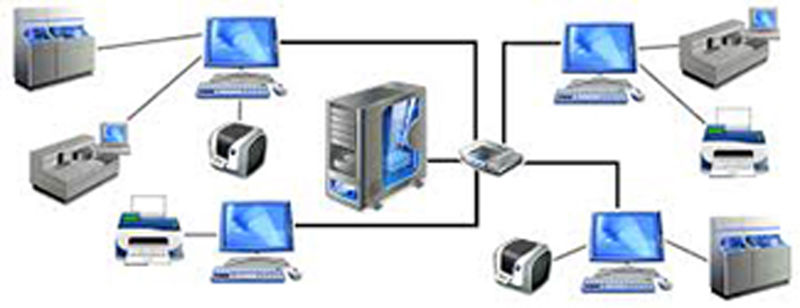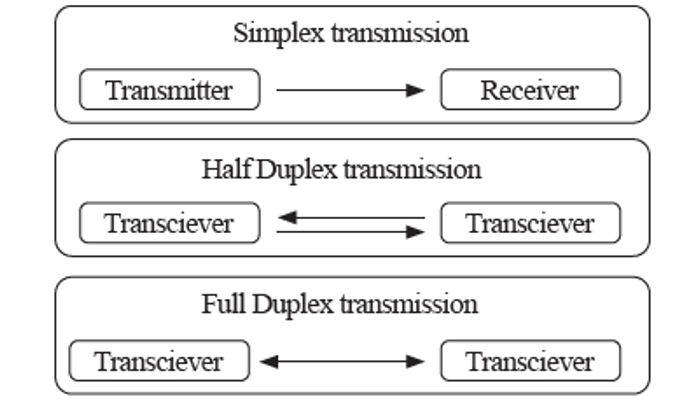Introduction
Human beings have an inherent need to communicate with each other using traditional means or modern technologies. Some of the methods that were used to communicate in the ancient times include screaming, smoke, drum beating, and blowing trumpets. Today, modern means of electronic communication can be traced back to 1876 when Alexander Graham Bell invented the telephone. Since then, the invention of computers, Internet and mobile telecommunication has tremendously improved the way we communicate and share information hence making the world a global village. In this chapter, we begin by defining basic networking and data communication concepts before detailed discussion of technologies and elements used in computer networking.
Networking and data communication terms
In this section, we define some of the basic terms used in networking and data communication. These include computer network, data communication, telecommunication, and information and communication technology (ICT).
The term network refers to a collection of connected entities, systems or objects that interact with each other. Therefore, a computer network is a collection of computers connected through communication channel to communicate and share resources.
The term communication channel refers to any physical or wireless transmission medium through which data signals flow from source to destination. Figure 1.1 shows a sample computer network in which devices such as computers and printers are interconnected using physical communication channels.

Data communication
Generally, the term communication refers to the process of using sounds, words, symbols, gestures, pictures or signals to pass a message or information from one person to another. Therefore, data communication refers to the process of transmitting data signals from one point to another through computer networks.
Terms used in data communication
The following section describes some of the terms used in data communication that include data signal, modulation and demodulation, multiplexing and demultiplexing, bandwidth, baseband, broadband and signal attenuation.
- Data signal: Data signal is a stream of binary that may be represented using voltage levels in electronic circuits. In data communication, data signals can either be analog or digital in nature. Analog signal is made up of continuous sine wave while digital signal is made up of a non-continuous square wave.
- Modulation and demodulation: This is the process of converting data signals to a form that is suitable for transmission over a transmission medium. For example, a device known as modem converts (modulates) digital signal into analog form to be transmitted over analog telecommunication systems. Modem at the receiving end converts incoming analog signals back into digital form using a process known as demodulation.
- Multiplexing: This is the process of sending multiple data signals through the same medium as shown in Figure 1.2. On the other hand, demultiplexing is the process of splitting multiplexed signal back into multiple channels at the receiving end.

- To understand how multiplexing works, imagine a situation where several computers in town A are to communicate with destination computers in town B. If multiplexing is not used, each of the computers in town A would need a dedicated link to the destination node in town B. But with multiplexing, computers are made to share a single physical channel between the two towns. To share the same carrier, incoming data signals are transmitted using different frequencies or time slots known as logical channels.
- Bandwidth: Refers to the maximum amount of data that a transmission medium can carry at any one time. For example, a copper cable may have a bandwidth of 100 megabits per second(mbps).
- Baseband signal: Baseband signal is a digital signal that is generated and fed into the transmission medium directly without modulation. The baseband signal occupies the entire transmission channel but multiple signals can be multiplexed and transmitted at different time slots.
- Broadband: In broadband transmission, data signal is sent over the transmission medium using a particular frequency. This means that several data signals can be sent simultaneously through the same medium but at different frequencies. Frequency bands between these data signals prevent them from overlapping.
- Attenuation: This is signal loss resulting from decrease in strength and energy as it progressively moves along transmission medium. If the signal is not regenerated (boosted), it may be lost along the way hence may never reach the destination. Attenuation may be minimised by use of repeaters that receive a weak signal and amplify it for propagation along the next leg of the medium.
Modes of data transmission
Data transmission modes may be classified into three modes namely simplex, half duplex and full duplex as shown in Figure 1.3.

- Simplex: In simplex transmission mode, there is only one way transmission of data on the communication channel. An example of simplex communication is how we receive broadcasts on transistor radio and television. In this case, the listener cannot communicate back to the source through radio receivers.
- Half duplex: In half duplex transmission, two way communication is possible over the communication channel but not simultaneously. The transmitter sends the message then after finishing, the receiver is allowed to send back the response. For example, if two police officers are communicating using radio call, the source has to give an audio indication at the end of every message e.g. “over” or press a button for the recipient to give back response.
- Full Duplex: This is also referred as full duplex because data can be transmitted simultaneously in both directions. For example, two people making a call over mobile phones can talk and listen to each other simultaneously unless they agree who should talk first.
